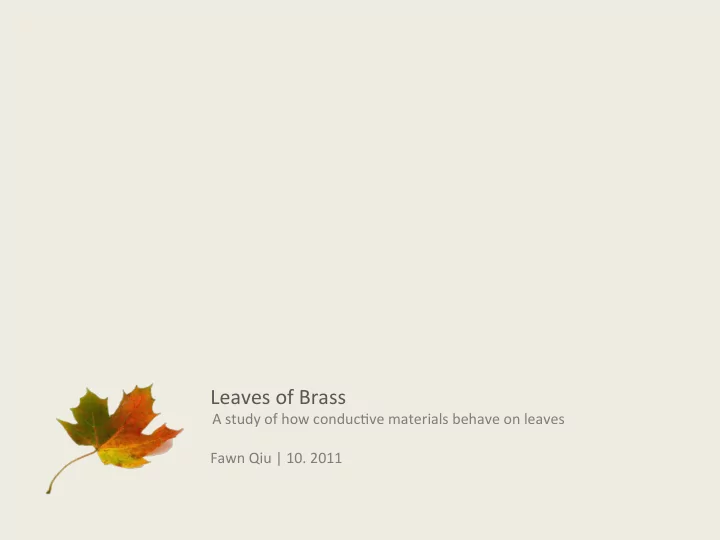

Leaves of Brass a A study of how conduc4ve materials behave on leaves Fawn Qiu | 10. 2011
Conduc4ve ink was drawn on a piece of leaf to create an electrical circuit Silver ink painted using a s4ck was the most effec4ve Pen and brushes were less effec4ve due to lack of precision and roughness
Each circuit was then copper‐plated separately Time in copper bath determined the color of copper plates 3 minutes in bath ‐> dull copper color >10 minutes in bath ‐> bright copper color Pla4ng surface determines level of adhesiveness of the copper Copper on the stem adhered well Copper on the leaf was fragile and broke off easily (it was glued back) Silver ink was more conduc4ve than copper, although measurements fluctuated significantly Silver resistance: 0‐0.1 Ohm Copper resistance: 0.2‐0.3 Ohm Ground Input Input
Soldered Microcontroller and baUery were connected to the circuit through soldering and conduc4ve ink Soldering provided a stronger bond than conduc4ve ink and glue especially due to the slippery surface of the leaf Connected using ink
The circuit is connected; touching the input (the stem) turns lights on and off
Challenges Fresh leaves were difficult to work on Soldering provided beUer connec4on than ink alone Conductors would’ve adhered beUer if the leaf was dry Conduc4ve string could be a subs4tute of ink, but it broke the leaf easily; coated string was more difficult to work with
Poten4al Applica4ons – interac4ve tree installa4on
Recommend
More recommend